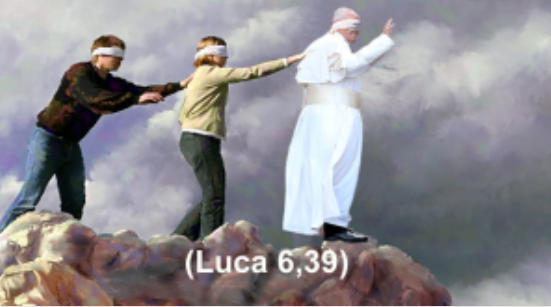This deeper and wider crisis, Viganò believes, involves, theologically, an illegitimate rejection (that is, not a legitimate development) of traditional Catholic doctrine. The aim: to construct a more modern “new church,” marked by a faith and practice in many areas of Catholic moral and sacramental life different from the Church of the past.
Viganò sees this rejection of traditional teaching as a matter of grave concern.
In keeping with his role as a Catholic bishop, he told me, he feels it his duty to do all he can to defend orthodox doctrine.
“I cannot be silent if the faith is at stake,” Viganò told me. “If others will join me, all the better. But even if I am alone, I must speak out.”
He feels the proposal to build a “new church” is a danger to souls who will not come to know the authentic Christ of the Gospels (the “Good News”).
As he has reflected on this situation, he has seen more clearly, he says, that the history of the Church from the very beginning (the Arian heresy, the various Gnostic heresies, the Nestorian heresy, etc.) has been a long battle for that orthodoxy that G. K. Chesterton famously referred to as “the wild truth, reeling but erect.” (link)
But Viganò also believes that this long battle, especially during the past two centuries since the French Revolution, and above all during the past 50 or 60 years, has seen many losses for orthodoxy, and many victories for of those seeking to alter perennial Catholic teaching.
And he has come to lament that recent Popes — and he himself as well, as a bishop charged with defending the faith — have not been more successful in preventing this slow departure from the orthodox faith.
Now, because Canon Law states that the “supreme law of the Church is the salvation of souls,” Viganò says he wishes to do everything in his power, preferably with the help of other bishops, including the Bishop of Rome, but even if he is alone, to protect the faithful from this deepening apostasy, which he believes risks the loss of salvation and eternal life to countless souls.
Viganò notes that his first Testimony was oriented essentially toward the question of clerical sexual abuse.
This was because the matter of sexual abuse emerged from a question that Pope Francis (in Viganò’s recollection of the meeting) asked Viganò during their June 23, 2013 meeting.
“He asked me to tell him about Cardinal McCarrick,” Viganò said to me. “I did not bring up the matter.”
But Viganò now stresses that, at that same meeting (again, in his recollection) Pope Francis, after asking him about McCarrick, also asked him a second question, which was: What is the situation of the Jesuits in the United States?
In answer to this second question, Viganò told Pope Francis (he says) that the Jesuit order in the United States had played a key role in secularizing the country’s influential Catholic universities, and had often been in the forefront of an effort to change Catholic teaching in a direction not in keeping with the wishes of all the recent Popes — Paul VI, John Paul I, John Paul II, and Benedict XVI — and that, if Pope Francis could manage to reign in the order, reform it, and restore it to its former orthodox path, it would be a great gift to the Church in the United States and throughout the world.
This Letter, then, will take up the matter of the “Second Question” that Viganò says Pope Francis asked him at their June 23, 2013 meeting.
Archbishop Fulton Sheen: “The Mystical Body on earth today will have its Judas Iscariot, and he will be the false prophet. Satan will recruit him from our Bishops”.
Archbishop Fulton Sheen: “The Mystical Body on earth today will have its Judas Iscariot, and he will be the false prophet. Satan will recruit him from our Bishops”.





No comments:
Post a Comment
Note: Only a member of this blog may post a comment.